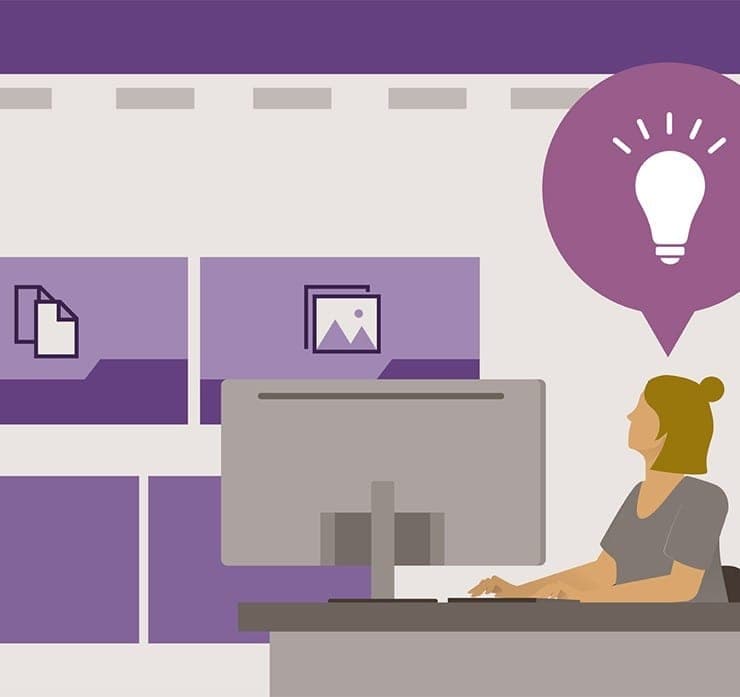Student Feedback
350-601: Implementing and Operating Cisco Data Center Core Technologies (DCCOR) Certification Video Training Course Outline
Introduction
Compute
Introduction
350-601: Implementing and Operating Cisco Data Center Core Technologies (DCCOR) Certification Video Training Course Info
Gain in-depth knowledge for passing your exam with Exam-Labs 350-601: Implementing and Operating Cisco Data Center Core Technologies (DCCOR) certification video training course. The most trusted and reliable name for studying and passing with VCE files which include Cisco DCCOR 350-601 practice test questions and answers, study guide and exam practice test questions. Unlike any other 350-601: Implementing and Operating Cisco Data Center Core Technologies (DCCOR) video training course for your certification exam.
Introduction
12. OSPFv3 Part 01
Now we have completed OSPF Version Two, and we have checked lab and theory related to OSPV Two. OSPV Three is very much similar using same typeof concept, but there is little bit of changes. First of all, OSPV Three is using IPV Six address. Schema. And for sake of simplicity, I'll show you in the lab what type of IPV-6 addressing we are using. So here I'm using this type of lab. You can see we have router R one,R two, R three, four and five. Here you can see one, two, and three. These are router numbers four and five. Now, in this topology, although just for sake of simplicity, I'm using only area zero. But we are not restricted to you—just area zero. We can go and create the same type of topology and methodology that we have learned earlier, and we can create multiple areas. All right, coming back to the addressing, what type of addressing we are using So we have something loopback, which is either zero or one if it is a router. So I'm using one and then double colon one,two, eight as a loopback IPV Six address. So suppose it is a router number four; you can see the numbering. It is router number four here, and this is router number five. Let me clean this, and let me write one more time. So suppose this is router number four. So IPV Six address over loopback address, either loopbackzero or one, you'll find four means double colon,and that will be used inside IPV six fourand then slash one to eight. That's the IPV Six address I'm using for loopback. And what about the interfaces? So suppose this is router number one and this is router number four. So the IPV6 address that I'm musing on here is 1464; you'll find it here. Again, if we have router numbertwo and router number three. So I'm using 23 and then 23 264 on this interface. Like that, you'll find the address scheme. That's why you haven't put all this information in this diagram. Once you see the label, it's very easy and straightforward. Okay? You will also find the configuration and the complete configuration in this document. When we get there, the first thing we need to do is enable IPV6 routing. You'll see how we're enabling all of this. So once your IPV6 means OSPF version three is up and running, you can go and verify the router ID. Now, router ID, although you can seethat it's having number very much, thisis showing IPV Four type of numbering. That's right. But the point is that this IPV-4 type of numbering that we have is related to IPV-6. You may think that, why not, we have something like that here as a router ID. Router IDs are not that much important in IPV Six. You can see the notes here. As a result, OSPV-3 chooses the red router IDexact algorithm used by OSP version 2. It is 32-bit dotted notation that we have in OSP version 2, but it has nothing to do with IPV. You can use any format for adders. 001-025-5108 should not use zerozero because it is reserved. Apart from that, you can use any 32-bit dotted notation. Now, once we go and configure all the routers, we'll go and verify the routers. LSA network LSA link LSA Internet LSA. These are the OSP version three commands. I will show you these commands in the lab. Now, what's the difference here? So in OSPF version three, you can see it's almost similar, and all the LSA types are almost equal to OSPA version two. We have two new LSAs: link LSA and prefix LSA. Now the summary LSA is now called an interarea network, and the summary BR is called an interarea router. Correct. The rest of the things you'll find are very similar. Now what about the configuration? You can see the configuration. We have five routers, so youcan see IPV six related configuration. First of all, we need to go and enable IPV six-unicast routing, and then we can go into the configuration. So, in our example, you can see that loop back one has this IP and then loop back one; the command is to connect to the interface. Once we are over the interface, then we cango and run this command IPV6, OSPF 1, area zero, area two, area three, et cetera. But we know that concept—that you have one backbone area, and then the rest of the areas are connected to that. We have checked all these things in the previous OSP Version 2 section, correct? Then here, you can see how I have given the IPV 600 just for sake of simplicity. So 14 one last 64, then somebody will find twelve. So that means if you are at R-1 and you're going to R-4, you'll find 14 addresses here. And then if you're going to Row Two, you'll find twelve colons. So, because we used the rest of the configuration, we can almost say that we have what we're using inside our OSPA version as well. although you can see the IP address is related to IPV4 as well. But it's up to us; if we are purely inside the IPV6 network, then these addresses are not required. These are the four configurations related to routers one through five. So, what we want to do next is go to the lab section and show you that everything is up and running. I'll demonstrate how to check the OSPof neighbour and then a few of the LSE output in the lab. All right, so let's stop here and show you the rest of the output in the lab.
13. OSPFv3 Part 02
Now we are ready to perform the lab related to OSPF version three, so let's do it. So already, I have done the configuration, and let me log in to all these devices one by one. Let me show you this. So the same topology that we have seen earlier in the slide in the PPT, I have all those five routers that are running here; they are virtual routers or viral environments, but if you want, you can use GNS 3 or any other emulation that is available. What we can do here, we can go here and wehave the script option and we can send to all. So, select all and show IPV six interfaces in brief to see what IPV six interfaces we have and how they are configured. As you can see, you have your global address as well as the link local addresses that are derived over these interfaces. So gigabit address 10 is two, and likewise, you can see all the IPV-6 addresses in the same way that we have discussed them earlier if they are numbered R-5 to R three.So you will see here that 35 is like that, and that is the address next. What we want here is to check the OSPF version three configuration. So, for that, we actually need to go, and we can go and check these interfaces. So if you go to these interfaces, only one command is there: that is IPV 6, OSPF 1, and area zero; apart from that, let me show you what other configurations we have. So you can see that I have used IPV6 Unicorn Routing; IPV6 was there automatically, and these configurations we have used—let me highlight these configurations we have used over the interfaces—and now the OSPF is up and running here. If you go to the OSB version threeneighbor, you can see that in the broadcast network, it still follows the Dr BDR rule to determine who is a Dr BDR, and so on. We know how it is forming; we have done this in the previous sections, and router number two has three connected neighbors: one is router number one, one is router number five, and one is router number three. So likewise, you can see here that it is showing you this information, and here you can see the router ID as well. So in this output you can see the router ID as well, and there are other outputs as well. You can go and check IPV6 in OSPF, and here you can go and check the ID. So you can see the router ID we have The router ID six in OSPF will also give you detailed information, and then if you want, you can go and do the filtering there as well. So I'll go back to routine number two, and here we can go and check different types of LSA's output. So we can go and check IPV6 and OSPF, and once you're there, you can see that what filters we have here make for a good long list of options that we have, but we are looking for a database, and after the database, you can see that we have options related to router link networks. You will see the router as well. Correct? So if you want to check the router, then we can go and check the self-originating link status. So, as you can see, we have the router LCS. Likewise, we can go and check the network LLCs as well in IPV 6. So instead of a router, you can go and use the network, and then self-originatingly, you have the network LSIs. Likewise, you can go and check the link as well as the link addresses. So here we can go and check the link, and finally you can go and check the prefixes as well. So if you have the prefixes, let's see where the prefix "self" originated. Great. So this is how we can check all of the LLC, most of the LC, and we know there is a good amount of LSE. But this is how we can proceed with the implementation, and then after the implementation, we can verify what the output is here and the implementation in all of the devices. I told you that I'm using onlyarea zero just for sake of simplicity. But to do the deployment related to version three Version three is the same, which is not a big thing. It's very much like what we are doing inside OSP for version two. All right, so let's just stop here and we'll move to the next section.
14. 1 .1 b MP BGP
Now we reach Section 1, Dot 1B, where we have to learn about multi-protocol BGP. Now, in this section again, as for the course curriculum, it's a small subsection, but what I have done is that I have recorded five videos. And after this session, you'll find five videos. First of all, you will understand what BGP is BGP.Then you will find out the basics of IBGP and EBGP and the lab. Then in the fourth and fifth videos, you'll find that BGP membership synchronisation and its follow-up with the lap After completing these five videos, you will be comfortable. That is how BGP works. And you will understand that when you're going to apply the BGP inside the data centers, what are the basic terms and how you can create a BGP, IBGP, or EBGP relationship? What is autonomous system? What is your neighbor's autonomous system? how you can advertise the prefixes, et cetera. So continue this learning process complete. The next five videos related to BGP will move to the next section. That will be the only one.
15. Border Gateway Protocol BGP
Let's start. What is "border gateway protocol"? The first question that arises is whether there aren't already protocols, such as routing protocols. There is still why I need one extra protocol. Now, the answer for this is that this is the exterior gateway protocol, which means this will override or this will run on top of any of the underlying protocols, any of the underlying IGP protocols, and it will work as the application protocol. And that's true if you see the port number that BGP is using; this is TCP port number 179. Generally, applications are using TCP port numbers, or they are using TCP or UDP. So BGP is a type of application protocol generallybuilt to run over the over any of theprotocol and cross the one autonomous system. Again, the autonomous system covers one region. So cross one region, and then it can go to multiple regions. Or, if you want to control multiple routing, network advertising, or control for a variety of reasons, that is a protocol. Or in other words, we are saying that it's a protocol for the Internet. It's a highly robust protocol. It has so many tuning options; it has so many attributes, so we can tune it. And that's the thing. So it says advanced vector protocol with high levelof tunability that can go across the regions. It is a type of application protocol. Finally, it can interact with or hold a large amount of routing database, as defined by the A spot. We know that autonomous system toautonomous system has its reachability. It is a distance vector protocol. It has the autonomous system number defined. From 1 to 65K are displayed here. A few of the numbers are private and reserved. Nowadays, we have dotted notations as well for the VCP. Now, you can see why you want to use BCP. So, if you have multiple connections to the external auto-numbering system, that is, multiple exits or multiple ISPs connected to you, and those multiple connections are with the same carrier or provider but connected via routing policy, the existing routing equipment can handle the additional demands. It is highly tunable. So if you want to do some sort of preference path preference), some sort of load balancing, etcetera, etcetera, So those things are achievable with help from BGP tuning capabilities. One critical point to remember here is that the true benefit of BGP is in controlling how traffic enters the local autonomous system rather than how traffic exits it. So the true benefit is that you control traffic when it comes to you, when it comes to localias. Now, we can have two types of labor. We can have IBGP or EBGP for the exterior and interior. BGP-IBGP means within the autonomous system. So in this diagram, routers B, C, and D are Ibgpa or they can be Ibgpa, and then different autonomous systems like 100, 200, and 300 can be EBGP or exterior BGP. Now we have options that whattype of Ivgp relationship I want? Do we have full mesh orwhat other tuning options we have? We'll go check later to make sure we have multiple options when discussing the internal neighbour or interior neighbour relationship. Generally, when we are creating the IVG relationship, we should create it fully meshed. Otherwise there are some other options to dothe advertisement for the network that one IBGis getting and advertising to other devices. Now, one device can be part of one autonomous system, and if you want to make it part of more than one, it will throw an error. We have the ad value fixed for EBGP. For ad value, the administrative distance is 20 miles, and for IBGP, it is 200. Okay? So that means the EBGP routes are preferred over the IEBGP routes. So 20 versus 200: lower is better. That thing we know now is the BGP message; we have BGP peer messages. What type of message do we have? So we have Open message, we haveKeep alive, we have update and Notification. "Now open" means that I want to form a relationship with my neighbor. And here you can see that an open message is sent between peers to initiate the session. The open message has several parameters, like version local, PGP, and router ID, which you have to keep alive. Keep alive is something like sending the "keep alive" message to your neighbour to let them know that you are alive or not in BGP. By default, it is sending that "keep alive" message after every 62nd time you enter free. That is 180 second is the hold on timer. So after three KPA live messages, if you're not getting responses, that means your BGP neighbour is dead. You will mark this as dead with the help of a notification message. So now this notification message is sentwhen there is a factor condition. If a notification message is sent, the BGP peer session is toned down or reset anyways; if your peer is down, that means you will send the notification that your peer is down. Then we have the update messages that are used to exchange the route between the peers. Now here in the BGP state machine, that is, the finite state machine, we have some other messages as well. So, for example, if I have two routers and want to form a VDP neighbour relationship between them, this means that when a BGP session is formed at that time, So you will find that they will exchange some sort of message. These are ideal connections: they are active, open, confirm, are established, and are correct. So idle means that it is initiating the BGP state. Then connect that you are waiting for the remotepeer active that you're actively initiating the connection. Obviously, this connection is TCP. Then open sent. "Open" means you have sent the open message. Once you send the open message thenBGP listen for a reply keep alive. So you have sent the message, you got the acknowledgement that is openly confirmed, and then the finite state machine will establish the connection, correct? So it's very easy to connect, be active, open, send, confirm, and establish. Now if Pierre is stuck in active estate, the potential problem may be that maybe you have a password mismatch, maybe ACL is blocking port number 179, maybe you have an incorrect ear, maybe you have an incorrect neighbour statement, and so on. So if it is stuck in the activist rate, that means it is not good. Then you have to troubleshoot and get this working. Now how are we going to configure it? We know that one router can be part of one BGP autonomous system. Go to the router's BGP and then the autonomous system if it is an Ebgpa Remember that EBG ports have a TTL value of one. So they are always thinking that their next stop, their peer, is one hop away. So in that case, you don't need to modify the TTL value. You don't need to modify anything. Anything else means router B of A is 100 and router C of A is 900. They have to give simple commands to routers, VGP neighbors, and remotes. That's it. Now if it is Ivgp peer then you cango and you want to update the source. For example, we commonly use aloop-back as a router ID. So in the case of an IBGP neighbour relationship, this update source loop back command is correct, and I'll come to that EBGP multihop option as well. For example, if you have an EVGP relationship and it is a multiple hop away, you can use the EBGP multihop 200. So in this example, it is showing simply that. Suppose you use the loopback address instead of this physical address, if you use the loopback address that is one hop away, how will you form the relationship? So in that case for example the router C isusing the neighbour one one and we can see thatwho is obviously this router be back address is 1111. So in that case, that will be a hop away. For that, we should go and use neighbour one one evgp multi hop two. You should count how many hops away your peer is, and then you can use this multi hop command. Finally, we can go and use the password with the neighbour command. So for that, we have the neighbour password and, say, for example, Cisco, we have other options as well that, if you want to change the keepalive timer, we have discussed that. The default keep-alive time is 60 seconds, and one eight of a second is the hold-down timer. But suppose if we want to use some aggressive timers, we can go and use timers BGP 30 and 90, and in that case, we can go and set the BGP timers. Alright, so let's stop here, and in the next section, we'll perform the lab procedures we have covered in this section.
16. BGP Basic Lab iBGP vs eBGP
Now we have to perform the lab related to BGP. Here you can see in the diagram that I have a router on AC 100. So AC 100 and a 200 router. They are going to form EBGP relationship exterior BGP. And in between A is 200. Say for example, switch 10 one and 10five, they are going to form IBGP relationship. Okay, so let's start the configuration for R one. If I go to Rwanda, I can go, and I can initiate the router BGP process. For example, what is your neighbour for neighbour Ican go and check the directly connected neighbor. So this number 1105, which is a directly connected neighbor. As a result, he has the neighbour number 10105. And then what is the remote ace? So we should go and give the remote ACES. Say, for example, 200. I'm going to configure then here, if Igo and check show IP BGP summary, youcan see that state is Idle, correct? So it has been initiated. And if I go and do some debugging of IPBGP, what type of packets do I want to debug? So for example, I don't want all, but if I can get events, I can see some of the messages. So already we are monitoring the screen, showing some of the events. If we debug IP BGP, I just want to see the TCP number. So, all address families and import IP before turning off your lights, etc. Okay, if I do all, then will be big output. Okay, now there's one other command we have. So here, you can see that at least I'm getting this message. Active transitioned from active to idle. It's tried to move from Idle to Active, but it is not. And then here, you can see that you have a TCP. So, if we go ahead and check Show TCP TCB and then press enter, If you want to see the brief, you just want to see if you have any open ports and if you have any other options. So we have the TCP TCB. Actually, that's the command, TCP. TCP is the command. And if you know the TCP address, that will work anyway. So let's move on and go to the other side. Here I want to initiate the router BGP process 200, and then the neighbour is 10-1, whose remote is 100. That's it. So, if I go here and we see the packet here, you can see that we should stop the screen. So here you can see that you have the open capabilities opened, route first, then open again. Active proceeded to open, sendtoopen, and confirm these transactions. We have actually checked into our session. And then you can see that the neighbour is up. And now if you go and check the TCP/TCB, So you now have this established session, as well as the address. Let me undebug. And now you can see the output for this. You can see the port number. Is this the local port? Is this the foreign port? Is this great? So most of the information we are getting from here Alright, so now the EBGPrelationship is up and running. Now what I want is that, as per the hour diagram, I want to create an IEBGP relationship as well. So I know that neighbor's address is, say, 10110-110-1101, and that his remote is the same as mine. However, because I'm using the neighbour command, which is the loopback address at this point, I want to update source loopback zero. And I should check an interface looking back at zero. So yeah, that's correct. Now I'm going to, so let's go there and configure this. First of all, let's enable the BGP 100 whose neighbor's remote is the same that mine has. And then the neighbour update source loops back to zero. Now, if you go to 10:5, you will get one message showing the IPBG summary that you have two neighbors. Both are up and running. So one is up and running, as you can see here; the zero prefix state is up and running. Now, if everything is okay and correct inbetween 10 five and 10101 one and zerofive, then they should form the BGP. but it is not. So let's quickly check the BGP configurations. Section BGP. So here you can see that I am part of 200, and this is also part of 200. So here, you can see that directly. You can see that we should have the correct configuration. This is part of 200. And now you can see that we're getting some sort of notification messages. We have seen that this is something that happens when you have some error notification messages. We are getting some malformed constructs. And if you go ahead and check the summary neighbourhood like that, it is coming; let's go back, change the, and return to Anzac.
Pay a fraction of the cost to study with Exam-Labs 350-601: Implementing and Operating Cisco Data Center Core Technologies (DCCOR) certification video training course. Passing the certification exams have never been easier. With the complete self-paced exam prep solution including 350-601: Implementing and Operating Cisco Data Center Core Technologies (DCCOR) certification video training course, practice test questions and answers, exam practice test questions and study guide, you have nothing to worry about for your next certification exam.



















